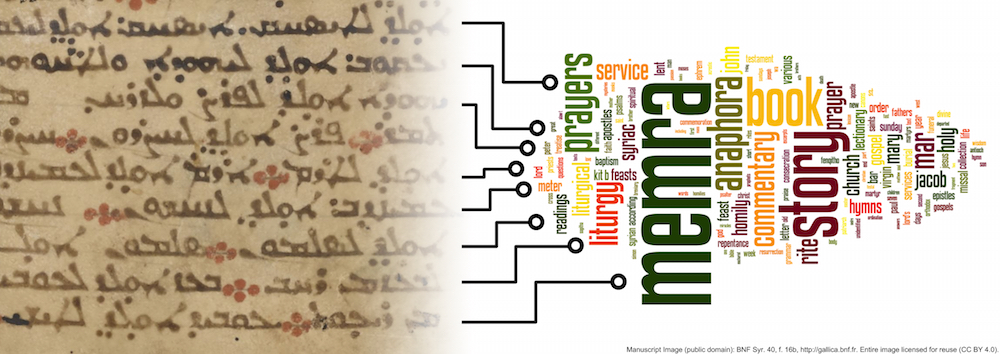
Dr. Nathan P. Gibson, co-editor of Syriaca.org’s New Handbook of Syriac Literature, will present a paper titled “Toward a Cyberinfrastructure for Syriac Literature: Mapping a Text Corpus using TEI and RDF” at the Digital Classicist Berlin seminar on January 24, 2017.
Abstract

A few years ago, scholars of Greek and Latin literature called for a “cyberinfrastructure” that would facilitate a new generation of digital collections––an infrastructure that uses linked open data approaches to organize the myriad of web resources related to classical studies. Already such frameworks are being built on the basis of existing claves, digital transcriptions of texts, and other tools that comprise standards in the fields of Greek and Latin.
But what would it look like to build a cyberinfrastructure for a field that substantially lacks such standard tools? Scholars have pointed out the necessity of this kind of digital framework for literature written in Syriac, an Aramaic language used widely in the Middle East from late antiquity through the middle ages, and still used by minority communities from India to Lebanon and California. On the one hand, unlike the situation of Greek and Latin texts, there are no comprehensive finding aids and few digital transcriptions for the Syriac works represented in tens of thousands of manuscripts worldwide, despite several centuries of scholarly research and cataloguing. On the other hand, online Syriac resources are spontaneously proliferating as more and more repositories post their collections online and users contribute PDFs to crowd-sourced initiatives. The New Handbook of Syriac Literature, a born-digital reference tool being produced by the Syriaca.org project, attempts to address both of these infrastructural challenges. This seminar will confront the question of how TEI-XML can be used to model metadata about works in a way that supports a larger cyberinfrastructure (including RDF serialization).
Further, the presentation will explore the opportunities such an endeavor has to reorient an entire field. How might such a cyberinfrastructure help reevaluate research priorities, which for centuries have been driven largely by the uneven extent to which certain texts are more discoverable and available than others? And how might it enable scholars to map the entire Syriac literary corpus by subject, time period, or genre––something that has never before been possible? The initial findings and examples presented here may point the way forward not only for Syriac studies, but also for the study of other literary corpora that so far lack standard reference tools and classification schemes.